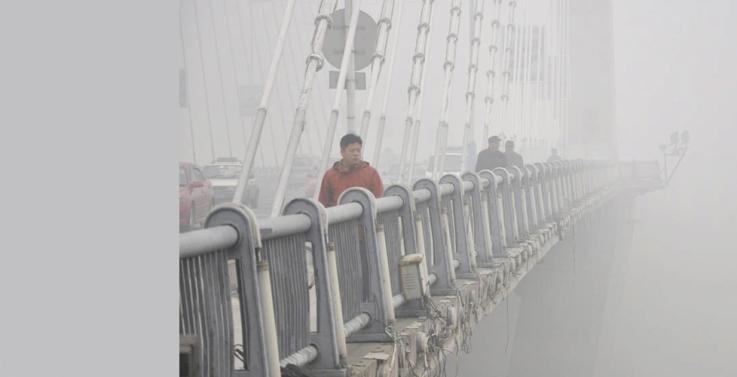
China’s response to its air pollution crisis could provide a major breakthrough in addressing global warming and new impetus to international climate change negotiations, according to analysts.
When thick smog blanketed Beijing and northern China in January 2013 - then other regions during the past year - air pollution became a major economic and social issue across the country.
In ‘China’s response to the air pollution shock’ published in May’s edition of Nature Climate Change, Victoria University’s Professor Peter Sheehan and colleagues argue recent air pollution crises have pushed the Chinese government to aggressively reshape its energy system, with profound implications for global climate change.
Figures show China has been responsible for over two-thirds of the growth in global CO2 emissions from energy use over the past decade, while growth in China’s emissions alone threatens to take the world well beyond 2°C warming.
“The past decade has been one of only gradual evolution of China’s energy system and until recently the expectation was that this gradual evolution would continue,” Professor Sheehan said. “However, this pollution shock and its potential to destabilise the country have provided a major impetus for the government to take more drastic action.”
The Government’s response includes the Action Plan for Air Pollution Prevention and Control (2013‐17), issued in September 2013. It aims to achieve a marked improvement in air quality over the five years to 2017, with a particular focus on the three key regions in the heart of China: the Beijing‐Tianjin‐Hebei region, the Yangtze River Delta and the Pearl River Delta.
The Plan includes mandatory targeted reductions in fine particulate emissions, a ban on new coal power plants and sharp cutbacks in coal consumption and steel production in the three regions. For example, steelmaking capacity in Hebei province, which produces about one quarter of China’s steel, will be reduced by 80 million tonnes by 2017. This is equivalent to about 10% of China’s steel production.
Most polluting heavy vehicles are to be removed from three key regions and new fuel standards introduced by 2015 and nationally by 2017. Non‐fossil energy resources will increase to 13% of total energy consumption by 2017, by comparison with 9.4% in 2012 and there will be increased emphasis on natural gas, which is to gradually replace coal by 2017 in power stations, industrial furnaces and thermal heating plants.
Meanwhile, hundreds of air quality observation stations have been installed across the country providing real time publicly available data on air quality with a monthly ‘naming and shaming’ of the worst polluting cities.
“If China’s pursues these and other plans to control air pollution China’s emissions could peak by about 2020 and then begin to fall. This is a dramatic change relative to its previous path, and would greatly enhance prospects for holding global warming to less than 2°C,” Professor Sheehan said.
“The new direction also demonstrates an alternative path for countries, such as India, that face rising pollution from development based on coal and oil and should influence current negotiations in the United Nations Framework Convention on Climate Change to establish by 2015 a legally binding emissions agreement to apply from 2020.”
